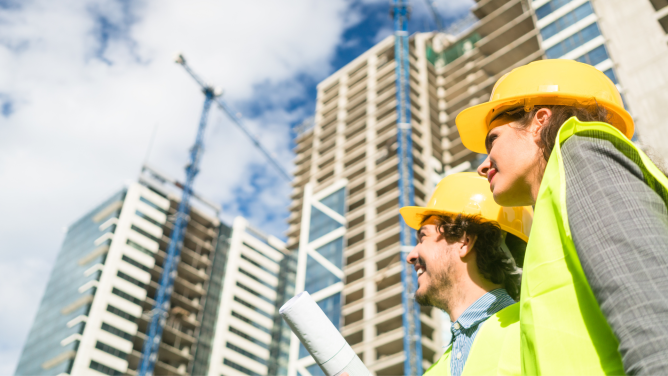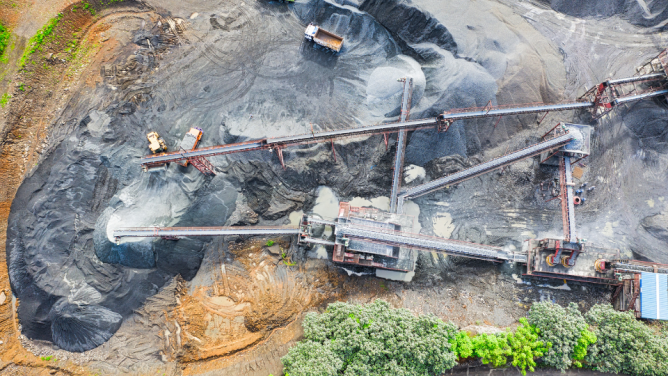What is meant by “life-cycle assessment” when constructing a building?
Bruno Peuportier: At our research center, we look at things from an energy specialist’s point of view. During the 1990s, people wanted to know if we weren’t going to use more energy by producing and installing insulation and double glazing, than the energy these elements save during a building’s use phase. In short: it seemed we needed to look at energy consumption and the impact the chosen materials have on the environment. To find answers to these questions, we started working with LCA methods. LCA assesses the energy and environmental impact of a building, from how the materials used to construct the building are produced, to building renovation, dismantling and the use phase. The aim is to not shift resource consumption and pollution from one phase to another of the building’s life cycle.
The upcoming RE2020 regulation is particularly interested in energy and carbon footprint. At our lab, we take into consideration a larger set of factors to avoid transferring the impact. For example, if we use wood energy we reduce the carbon impact, but it produces fine particles which can have an impact on health. The international authorities regulating LCA recommend integrating at least three main areas: human health, biodiversity and resources, which includes energy and raw materials.
What proportion of a building LCA focusses on materials compared to that of building use?
BP: The answer would be different in Nice where you have less heating needs, compared with in the north of France. It’s also very dependent on the type of use: a sports hall is heated to 14°C, a hospital to 23°C. It depends on a building’s lifespan. In the Île-de-France region, the calculations we usually apply to residential buildings give a carbon emission estimation of 60% for energy and building use, and 40% for the materials. But if I apply the calculations from the regulation currently under revision, then I get practically the opposite. This difference shows the value of a physics-based approach to eco-design to go beyond just respecting regulation. In any case, we have to deal with both aspects, materials and energy, as they both interact.
In the 1990s, attention was more focused on the environmental impact of materials, rather than on energy use. However, LCA already showed that energy use had a major weight in a building’s carbon footprint.
If we want to distinguish between materials and energy, then we have to create a model of a building’s entire life cycle. The initial question is thus: what is a building’s lifespan? The regulation considers 50 years. It’s not much, considering some buildings can last 200 years or more. By reducing the lifespan, we automatically give more weight to materials. On the energy side, the regulation is optimistic: it assumes that the daytime temperature is 16°C inside the housing, which does not reflect the reality, especially for collective housing where temperatures are often much higher. Air renewal is underestimated, according to the calculation thus far envisaged. In the end, the regulation reduces the impact of energy use and highlights the impact of materials. At the same time, bio-based material producers have encouraged them to consider that the effect of CO2 end-of-life emissions would decrease over time. This favors the use of wood in bio-based materials because, if burned, the CO2 end-of-life emissions count less than the CO2 captured during their production. But on the one hand, this calculation device, which is the subject of debate amongst scientists, is not necessary to show the environmental benefit of these materials, and above all it penalizes energy savings and renewable energies. We published a note questioning the scientific foundations of this choice of calculation, showing its effects on design choices.
What influence does the LCA of bio-based materials in construction have on forest management?
Jean-François Dhôte: The fact that wood emits less carbon than other materials it could replace is a very important element in forest management strategy. I led a national study that assessed forest development scenarios in France by 2050, to estimate how much wood contributes to climate change mitigation. These scenarios include major forest crises, including storms and wild fires, which release huge amounts of CO2. We took into account carbon storage in soils and trees, and emission savings by substituting materials. The calculation methods for this type of assessment are also the subject of debate. However, we must remember that despite forests collapsing under the effect of global warming, we can still increase logging. In mainland France, we exploit half of forests’ rate of natural increase. Sustainable forest management in particularly aims to secure stock – the wood product, carbon, biodiversity, amenities… It seems that we could double production without reaching this security. This is favorable in my opinion, because it contributes to forest renewal – in particular through species adaptability.
Is the timber industry taking advantage of an unprecedented opportunity to expand in the construction industry?
BP: The physics behind construction dictate that we usually have to combine different materials. If we build only with bio-based materials (wood and straw for insulation, for example), the buildings are very light. They lack thermal inertia. During a heat wave, you’ll need energy to air-condition them. This prompts us to not use bio-based materials without accurate research. Bearing in mind that it’ll also be difficult to replace concrete floors – they combine structural resistance and thermal inertia, and today we have to reckon with low-carbon concrete. In our LCA calculations, we only count a wood product’s emissions as negative if it comes from a certified forest. And we encourage wood to be re-used and recycled: this must be included in a bio-based product’s end-of-life calculation. We’ve been promoting wood for several years now. Obviously, wood alone cannot solve environmental issues in construction alone – but it deserves to be used wisely.
J-F. D: Considering that the carbon footprint of a piece of wood is zero, it’s a valid reason to burn the piece to recover its energy at the end of its life when the forest is sustainably managed: trees are replaced, the soil remains capable of absorbing CO2 so as to maintain a healthy forest ecosystem, and stocks are replenished. Forest products “carbon neutrality” is based on scientific reason.


